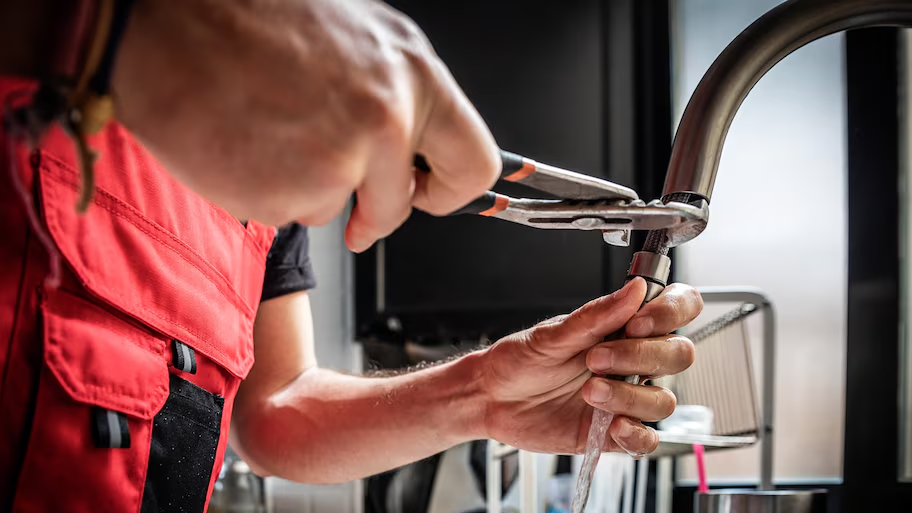Which It's Essential to Fix a Dripping Faucet
Which It's Essential to Fix a Dripping Faucet
Blog Article
How do you actually feel in relation to Why It's Important to Fix Leaky Faucets?

Trickling faucets could feel like a small trouble, yet their impact goes beyond just the aggravation of the sound. From wasting water to incurring unneeded economic prices and wellness threats, ignoring a dripping faucet can result in numerous effects. In this post, we'll delve into why it's crucial to resolve this common home problem quickly and properly.
Wastage of Water
Ecological Influence
Leaking taps add considerably to water wastage. According to the Environmental Protection Agency (EPA), a single faucet trickling at one drip per secondly can waste more than 3,000 gallons of water annually. This not only strains water resources yet likewise influences ecosystems and wild animals dependent on them.
Step-by-Step Overview to Repairing a Dripping Faucet
Devices Needed
Prior to attempting to deal with a trickling tap, collect the essential tools, consisting of an adjustable wrench, screwdrivers, replacement parts (such as washers or cartridges), and plumber's tape.
Common Faucet Issues and Their Solutions
Identify the type of tap and the specific concern creating the drip. Usual troubles consist of worn-out washers, rusty shutoff seats, or damaged O-rings. Describe maker instructions or online tutorials for step-by-step assistance on repair services.
Financial Expenses
Boosted Water Expenses
Beyond the environmental impact, dripping taps can inflate water bills considerably. The gathered wastefulness in time translates right into greater energy expenses, which might have been stayed clear of with timely repair services.
Possible Residential Property Damages
Moreover, prolonged dripping can result in damage to fixtures and surfaces surrounding the tap. Water accumulation can cause discoloration, corrosion, and also architectural problems if left ignored, leading to extra repair work costs.
Health Problems
Mold And Mildew and Mold Growth
The constant presence of dampness from a leaking faucet develops a suitable atmosphere for mold and mold growth. These fungis not just compromise interior air quality yet also posture health and wellness risks, especially for individuals with breathing problems or allergies.
Waterborne Illness
Stationary water in dripping faucets can end up being a breeding place for bacteria and other virus, increasing the risk of waterborne illness. Impurities such as Legionella microorganisms prosper in stationary water, possibly bring about significant illnesses when ingested or inhaled.
DIY vs. Expert Repair work
Benefits and drawbacks of Do It Yourself Repair Service
While some may attempt to fix a dripping tap themselves, DIY repair work come with their own set of obstacles. Without proper knowledge and devices, DIY attempts can aggravate the problem or lead to incomplete fixings, prolonging the problem.
Advantages of Employing a Professional Plumber
Employing a professional plumber makes sure that the underlying cause of the trickling faucet is attended to effectively. Plumbing professionals have the competence and tools to diagnose and repair faucet concerns successfully, saving time and reducing the danger of more damages.
Ecological Duty
Individual Contribution to Preservation
Taking duty for dealing with trickling taps straightens with more comprehensive initiatives towards water preservation and environmental sustainability. Every individual's actions jointly make a substantial influence on protecting valuable sources.
Sustainable Living Practices
By prioritizing punctual fixings and embracing water-saving practices, people add to sustainable living techniques that benefit both existing and future generations.
Safety nets
Regular Upkeep Tips
To prevent trickling faucets, execute routine upkeep such as cleaning up aerators, evaluating for leaks, and changing worn-out components promptly. Furthermore, consider setting up water-saving tools or upgrading to much more reliable components.
Value of Prompt Repairs
Attending to trickling taps as soon as they're discovered stops more water wastefulness and possible damages, ultimately saving both water and money in the long run.
Impact on Residential Property Value
Perception of Well-Maintained Residential Or Commercial Property
Maintaining a building in good condition, consisting of attending to maintenance issues like trickling taps, improves its perceived value and value amongst potential buyers or occupants.
Influence on Resale Worth
Characteristics with well-kept plumbing components, consisting of taps, command greater resale values in the realty market. Resolving trickling taps can contribute to a positive impact during property assessments and arrangements.
Final thought
Dealing with a trickling faucet exceeds mere convenience; it's a necessary step toward preserving water, lowering monetary prices, and securing wellness and home. Whether with do it yourself repairs or specialist support, doing something about it to fix trickling faucets is a small yet impactful method to advertise responsible stewardship of resources and add to a healthier, a lot more lasting future.
How to Fix a Dripping or Leaky Faucet
A leaking faucet is one of the most common problems that homeowners encounter, but it being commonplace doesn’t make it any less annoying. The constant drip drip drip of a leaking bathtub faucet, showerhead, or sink tap can disturb your home’s serenity. Left neglected, a dripping faucet can also result in higher water bills and discoloration or mold growth in your sink or plumbing fixtures.
Fortunately, you don’t have to be a trained plumber to know how to stop a dripping faucet. With some basic tools, replacement parts, and a little patience, leaky faucet repair is a breeze. In this article, we’ll explain what causes dripping faucets and how you can fix them.
What Causes a Leaking Faucet?
Kitchen and bathroom faucets come in all manner of designs, but most involve some combination of valves, O-rings, seals, and washers. The O-ring is usually the weakest link, but any one of these pieces can wear down over time. Heat, moisture, temperature fluctuations, minerals, mold, and movement can contribute to warping and corrosion, breaking the watertight seal. This just comes with the territory of being a homeowner. Everything is always subject to wear and tear, and some component parts of your appliances and fixtures need to be replaced on occasion. At least replacement O-rings are cheap!
More rarely, dripping faucets can be a symptom of excessively high water pressure. Were this the case in your home, you would probably notice that the leak is not isolated to one faucet. Water pressure issues are harder to resolve on your own. We recommend contacting a professional plumber if you suspect your water pressure is too high.
How to Fix a Dripping Faucet
Pipe wrench or monkey wrench Allen wrench set Screwdrivers Old towel or rag Shut off the water.
Before you do anything, you need to turn off the water to keep from drenching your kitchen or bathroom. You should find a valve under the sink and against the wall. Once you’ve turned this valve, try turning the faucet on to confirm that the water source has been cut off.
If you can’t locate your local valve for the faucet you’re working on, you can always shut off the water to the house at the main valve. Of course, this will prohibit anyone from using the sinks, showers, or toilets while you’re working on the faucet that’s giving you trouble.
Plug or block the drain.
You’ll be disassembling the faucet and removing some small bits of hardware. Plug the drain with a stopper or rag to avoid the possibility of a small screw falling into your P-trap.
Take apart the faucet assembly.
There are several varieties of kitchen and bathroom faucets, each with its own manner of assembly. For detailed instructions on how to disassemble your faucet, you can refer to the fixture’s manual or contact the manufacturer. If you know whether you have a ball, disc, cartridge, or compression faucet, you can find detailed schematics online.
In general, you need to begin by removing the faucet handles. You might notice a small screw that you’ll need to remove with a screwdriver or Allen wrench. If you don’t see any visible securing hardware, it’s likely hidden under a decorative cap that can be unscrewed or popped off with flathead screwdriver.
Remove each piece methodically, consulting a schematic when necessary. Take notes or arrange the pieces in such a way to make it easier to correctly reassemble the faucet later.
Remove the cartridge.
Once you’ve removed the handles and securing hardware, you should be able to remove the valve cartridge or stem. Some cartridges will slide right out. Other faucet models will require you to loosen a nut with a pipe wrench before you can remove the valve stem.
Examine the exposed hardware.
With the cartridge or stem removed, inspect the component parts. Check the rubber O-rings for wear and tear. Also examine the seat washer for corrosion or other damage. These pieces are usually the responsible parties for a dripping faucet, but it’s worth inspecting the other component parts while you have the faucet disassembled.
Find replacement parts.
Once you’ve identified which faucet component has failed, find an identical replacement. Your local hardware store should have O-rings, seat washers, and other standard components in stock. If you have a luxury or uncommon faucet, you may have to contact the manufacturer for a replacement part.
It’s a good idea to take your old parts with you to the hardware store so you can compare them with the store’s inventory and be sure you’re purchasing the correct replacement.
Reassemble the faucet.
With your new parts in hand, reconstruct the faucet and handles. Don’t be tempted to overtighten screws or nuts. You might think this could create a better seal, but it can instead damage or bend a delicate part of the assembly and create a new problem for you.
Turn on the water and test the faucet.
The only thing left to do is test your work. Unplug the sink, turn the water back on, and try the faucet. Congratulate yourself on a job well done!
https://www.libertyhomeguard.com/how-to-fix-a-dripping-or-leaky-faucet/

I discovered that page on Why It's Important to Fix Leaky Faucets when doing a lookup on the web. Loved our post? Please quickly share it. Help others find it. Thank-you for taking the time to read it.
Report this page